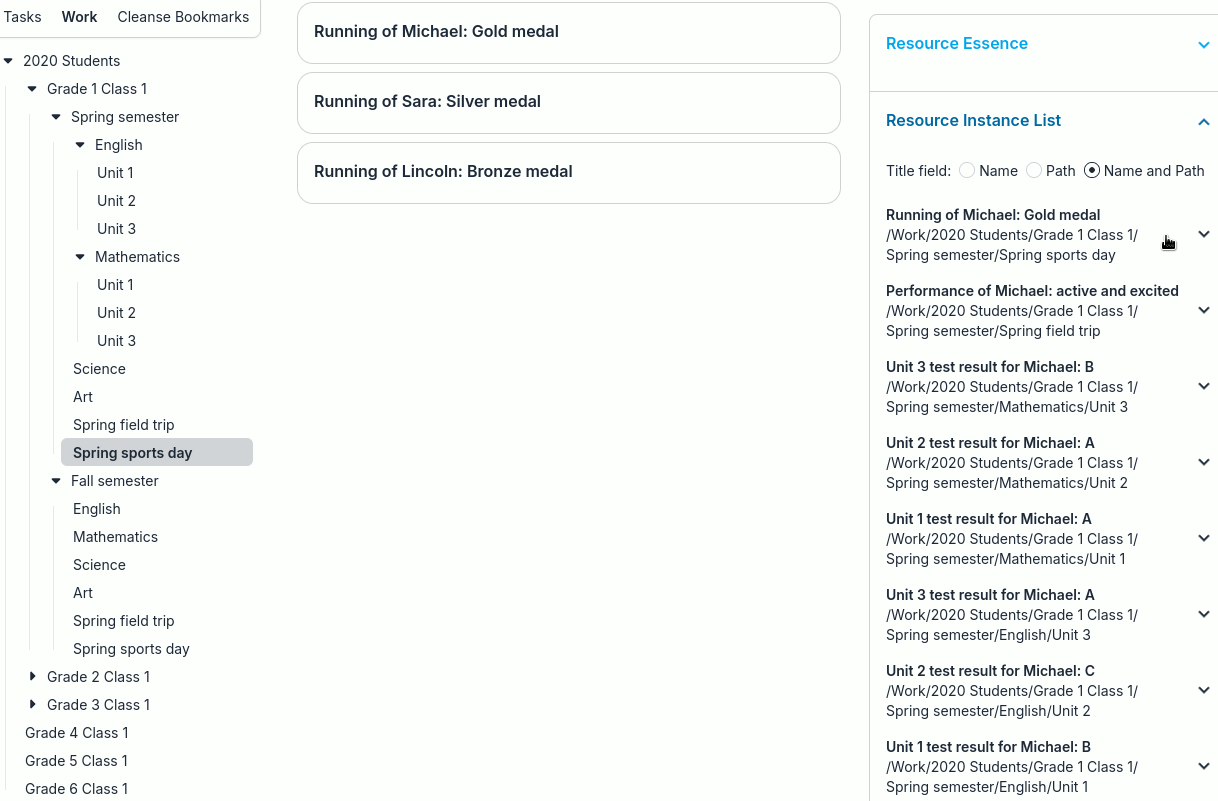Metaesn Use Case: Record, Observe and Study the development and changes of things
Posted by Liler on April 29, 2025
This is the unique use case where the innovative "resource-instance-system data model" and its management method truly shines or unleashes power of full potential.
You can use a resource to represent the thing to be studied, and then create a hierarchy or hierarchies according to the development stages of the thing or the specific systems involved.
Create instances of this resource under each hierarchy to record the specific situations of the thing at each specific stage.
Finally, use the instance list of this resource to view each instance linearly in chronological order and observe and study the development and changes of this thing.
It allows you to understand the development and changes of the thing at a glance.
Of course, you can also observe and study the development and changes of this thing according to the system hierarchy.
The specific process is as follows:
First, create a Resource for the thing, using the URL field to uniquely identify it and other fields to describe it.
Next, based on the different stages of development and changes or systems involved for this thing or similar things, create corresponding system hierarchies. Some parts of these hierarchies are unique to this thing, while most are shared with others (after all, most systems are composed of multiple things). You can also record other things under these hierarchies.
Then, under these system hierarchies, create specific Instances of the resource. Each instance points to the resource and has its own descriptive fields, which can be used to describe unique characteristics of the instance within the specific hierarchy. As the thing continues to evolve, more hierarchies and instances (with their specific descriptions) will be created.
Finally, you can use these hierarchies to view the stages or system structures and identify which things are involved in them.
Alternatively, you can first locate a resource corresponding to an instance, then view the resource. The resource’s viewing page includes an instance list, allowing you to linearly view, in chronological order, all instances of the resource, the system hierarchies they are part of, and the specific descriptions of these instances within those hierarchies. This provides a clear overview of the development and changes of the thing.
Therefore, you can record, observe and study the development and changes of things, not only from the spatial dimension, following the hierarchical structure of the space, but also from the time dimension, following the linear structure (Chronological order) of the time.
For example, an elementary school teacher observing and understanding the students can follow this process:
First create corresponding resources for all students and describe the general situation of these students
Under a system called "2020 students", create multiple subsystems such as "Grade 1 Class 1", "Grade 2 Class 1", ..., "Grade 6 Class 1"
Then, under these subsystems, create further subsystems for "First Semester" and "Second Semester."
Then Create additional subsystems for specific subjects, individual exams, specific activities, and so on.
Under these specific subsystems, create Instances for each student to record their specific performance in each activity.
To view all the performances of a specific student, first find the resources of this student, and find the corresponding instance list on this resource's viewing page, then you can clearly understand all the activities in which this student participates and his/her specific performance in each activity in chronological order.

No software I’ve encountered, including most bookmark managers, note-taking apps, or other resource management tools, can achieve this level of practical, efficient, and flexible management and viewing.
The "resource-instance-system data model" and its management method are more consistent with the real world and actual situations and more practical, efficient and flexible.
Please leave your comment: